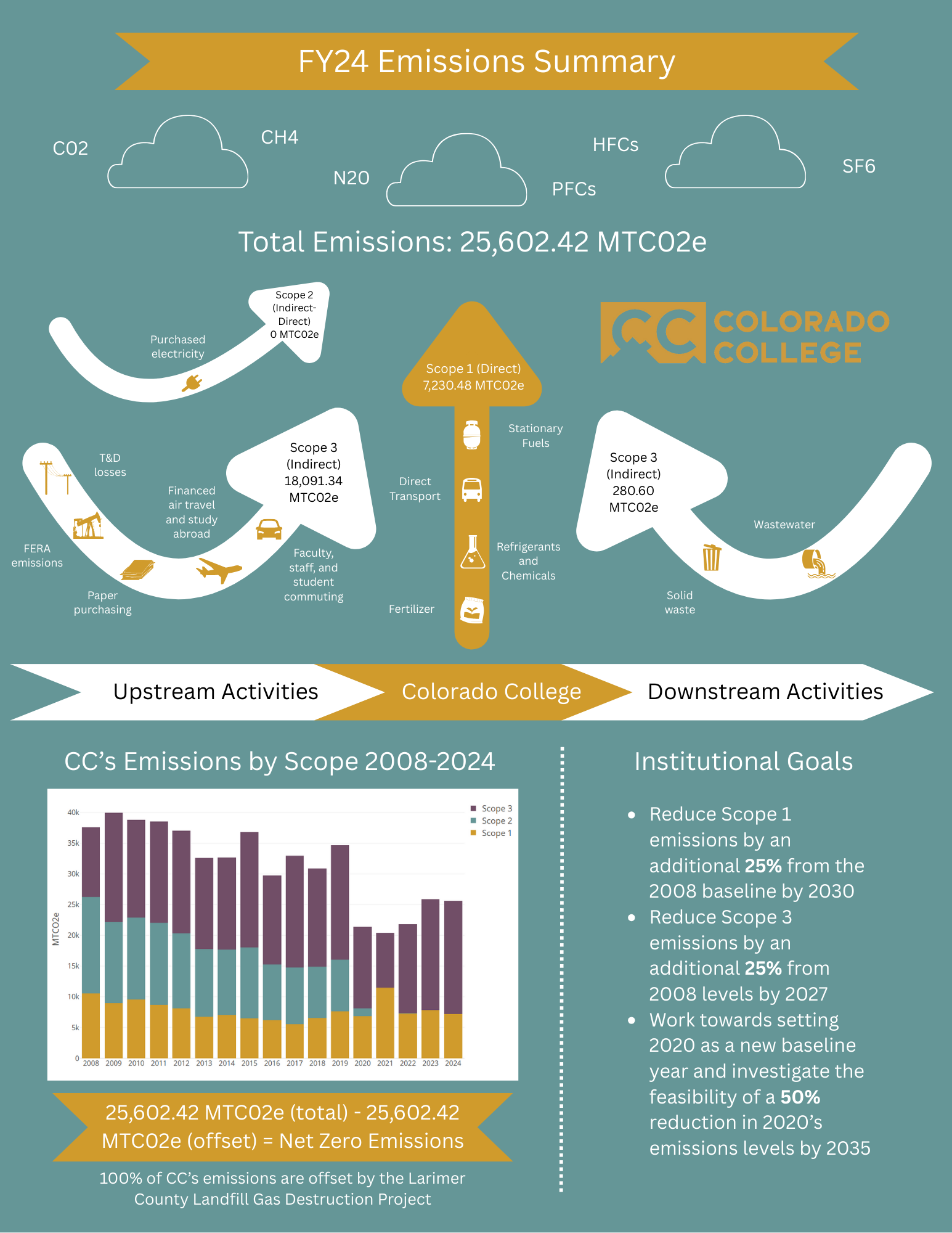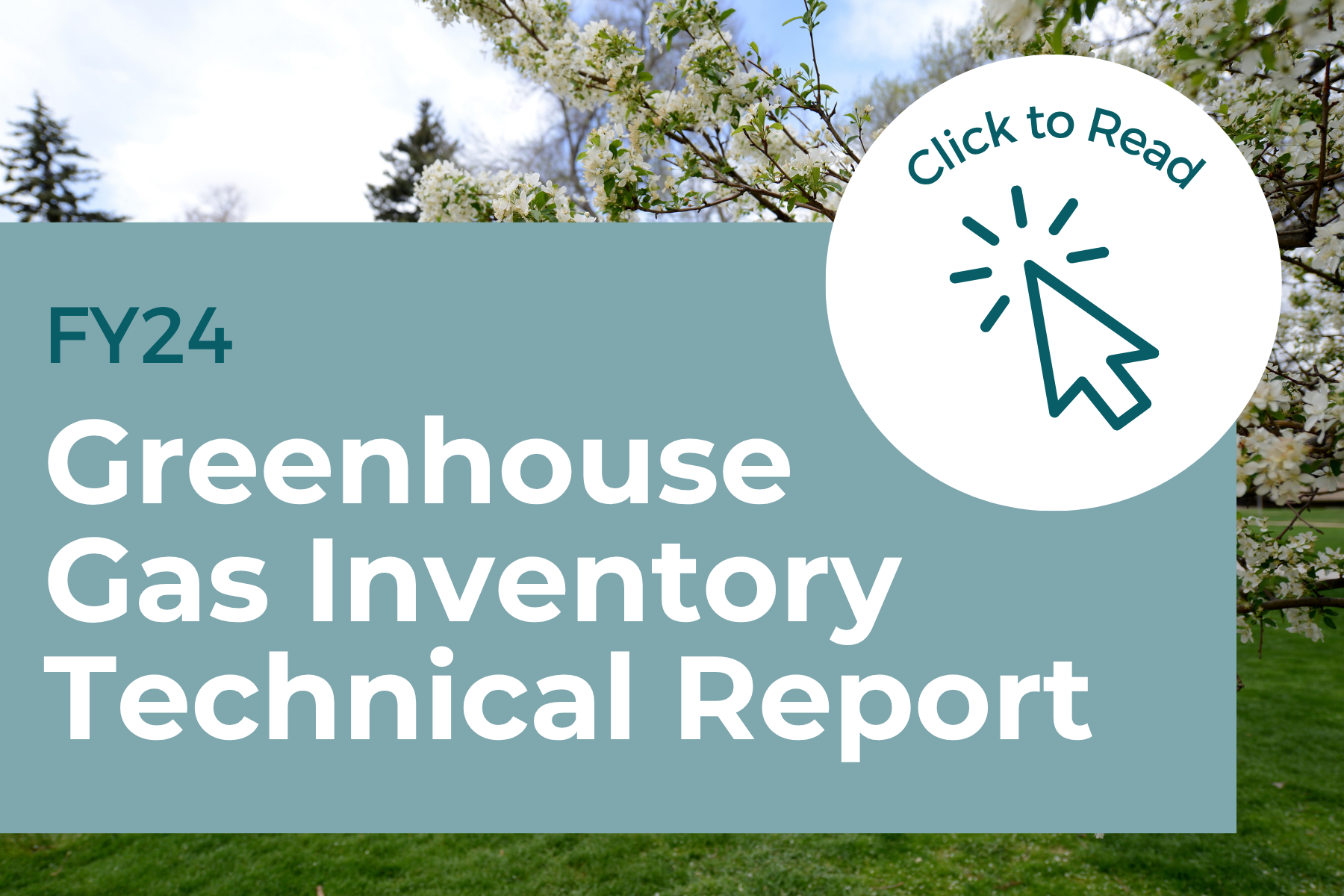Greenhouse gases (GHGs) include gases such as carbon dioxide, water vapor, methane, and nitrous oxide. Solar radiation (sunlight) is absorbed by the Earth and released back into space. However, GHGs in the atmosphere absorb the energy that is trying to leave and radiate it back to the Earth. More energy is reabsorbed than is released; excess heat is prevented from leaving the atmosphere. This imbalance leads to global warming. Emissions from human activities are increasing the amount of GHGs in the atmosphere, which is exacerbating global warming. GHGs are measured in metric tonnes of carbon dioxide equivalent, or MTCO2E.
All GHGs have a different Global Warming Potential (GWP). This is the amount of heat absorbed by each gas in the atmosphere; the higher GWP a gas has, the more it will exacerbate global warming. Methane is 28 times as potent as carbon dioxide and nitrous oxide is 265 times more potent than carbon dioxide (IPCC). The unit of measurement for emissions, MTCO2E, scales methane and nitrous oxide emissions to their carbon dioxide-equivalent emissions so that all emissions are in terms of carbon.
Colorado College keeps track of GHG emissions by sorting them into categories based on their source. These are called “scopes”:
- Scope 1 - Direct Institutional: Scope 1 emissions measure direct emissions from sources that are owned and/or operated by Colorado College. This includes natural gas for heating, gasoline, and diesel for CC's vehicle fleet, and fertilizers and refrigerants.
- Scope 2 - Indirect Institutional: Scope 2 emissions measure indirect emissions from the generation of purchased electricity.
- Scope 3 - Indirect Behavioral: Scope 3 emissions are related to behavioral choices. CC has chosen to measure emissions from study abroad, faculty and staff commuting, student travel to–and from home, business travel paid for by Colorado College, solid waste and wastewater, paper usage, and T&D losses. These choices reflect CC's commitment to addressing and changing the behavioral patterns that drive indirect emissions.




